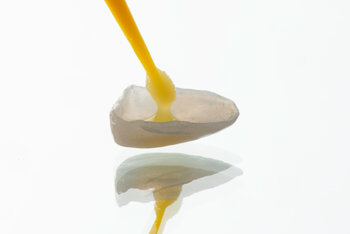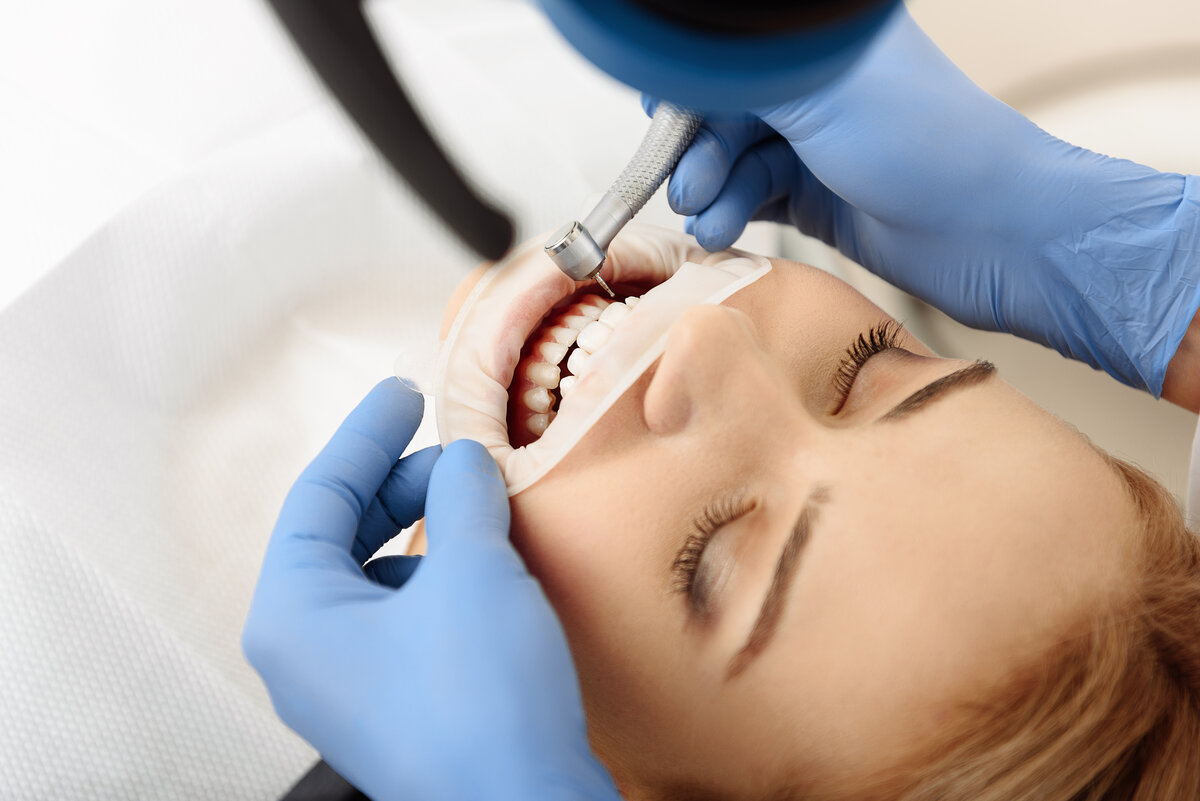When it comes to crafting a picture-perfect smile, dental veneers have long been a trusted solution. These wafer-thin layers of porcelain or composite resin are bonded to the front surface of your teeth, promising a transformation that goes beyond whitening or composite bonding. However, getting to that gleaming result often involves a meticulous process—one key aspect being the shaving or minimal preparation of your natural teeth.
Starting on a ‘Shaved’ Notion
The first question most people ask is, “Will my teeth be shaved for veneers?” The answer lies in the type of veneers you opt for and the current condition of your existing teeth. For traditional veneers, shaved teeth may be required.
This process involves your dentist gently removing a thin layer from your tooth’s surface to accommodate the veneer. This ensures a snug fit that seamlessly blends with your existing natural teeth, creating that desired aesthetics. Moreover, it may also be necessary for those suffering from tooth decay.
It’s important to note that ‘shaving teeth’ might evoke images of drastically filed or shaved teeth, but in reality, the process is far more gentle and precise. The quantity of tooth structure removed is typically equivalent to the thickness of the veneer itself—usually around 0.5 millimetres.
This allows the veneer to sit naturally within your smile line without protruding or looking artificial. However, less or even no enamel removal may be necessary for those with minor shape corrections or slightly crooked teeth.
The Role of Composite and Porcelain Veneers
Porcelain veneers and composite resin veneers can offer a dazzling cosmetic smile but often require different preparation methods. Porcelain veneers, crafted in a dental laboratory, are extremely durable, stain-resistant, and can mimic the light-reflecting properties of natural teeth. Due to their relative thickness, porcelain veneers often necessitate more tooth preparation or shaving than their composite counterparts.
Composite veneers, on the other hand, involve a layer-by-layer application of the composite resin directly onto the tooth surface. Often, composite veneers require little to no tooth preparation. Recent advancements in veneer technology, including the development of ultra-thin or ‘no prep’ veneers, have reduced or even eliminated the need for tooth enamel reduction in some cases.
The Journey to Your New Smile

The veneer process begins with an initial consultation, where your experienced cosmetic dentist will evaluate your oral health, teeth alignment, and aesthetic goals. They’ll then create a detailed treatment plan tailored to your unique needs. Digital imaging technology can even provide a preview of your expected results—your new cosmetic smile.
Tooth preparation or the shaving process takes place during your next visit. Your dentist will use a local anaesthetic on the area before gently reshaping your tooth’s surface. An impression of your prepared teeth is then taken, serving as a blueprint for your custom-made veneers.
While your permanent veneers are getting made in the dental laboratory, temporary veneers are installed to protect your prepared teeth and maintain a presentable appearance. These are usually worn for about two weeks.
Once your porcelain or composite veneers are ready, your dentist will ensure they fit perfectly and match your desired shade. Only then are the veneers bonded to your teeth. Composite resin is put on the teeth and hardened with a special light, ensuring your veneers are securely attached.
Taking Care of Your Veneers
Proper care of your dental veneers will ensure they remain a sparkling part of your smile for years to come. This includes maintaining a thorough oral hygiene routine and regular dental check-ups. It’s also essential to avoid activities that may harm your veneers, such as using your teeth to open packaging or biting on hard objects.
Dispelling the Myths Around Tooth Shaving
One of the patients’ most significant apprehensions regarding the veneer process is the perceived permanence of tooth enamel removal. The phrase’ tooth shaving’ may conjure up unnerving images. However, it’s vital to understand the nuances of such cosmetic dental procedures and dismiss common misconceptions.
Tooth shaving or preparation for veneers is far from an invasive process. The tooth’s structure that’s removed is minimal, equating roughly to the thickness of the veneer being applied. This precision ensures your new veneers’ perfect fit and feel while preserving most of your natural teeth.
Moreover, the shaving process is meticulously planned and executed, adhering strictly to the principles of conservative dentistry. Experienced cosmetic dentists ensure that the tooth preparation doesn’t reach the sensitive inner areas of the tooth, reducing the risk of tooth sensitivity post-procedure.
Weighing the Benefits of the Veneer Process
Understanding the advantages of veneers can offer a new perspective on tooth preparation and help evaluate the trade-off involved. Firstly, veneers can address several dental aesthetic issues—from stained and discoloured teeth to broken, misshapen, or slightly crooked teeth.
The transformative potential of veneers is immense, allowing individuals to achieve a harmonious smile that bolsters self-confidence. Veneers can also offer a more conservative approach to smile enhancement than crowns or bridges, especially when the tooth’s structure remains largely healthy and intact.
Exploring Alternatives: Minimal Preparation Veneers
The advent of minimal prep veneers has introduced an even more conservative option in the veneer process. Minimal prep veneers are incredibly thin, typically requiring less tooth surface removal for a suitable fit. Your dentist is the best person to guide you on the most appropriate treatment based on your specific dental condition and aesthetic goals.
The Involvement of Dental Laboratory in the Veneer Process
The collaboration between your dentist and the dental laboratory is crucial to the veneer process. Once your teeth have been prepared, impressions or digital scans are taken. These are sent to the dental laboratory, where your custom-made veneers are crafted with extreme precision by a master ceramist.
During this period, which may last a couple of weeks, you’ll wear temporary veneers to protect your prepared teeth. The temporary veneers also allow you to get accustomed to the feel of veneers in your mouth and provide feedback on any adjustments you might want in the final result.
The Bonding Process and Fine-Tuning Your New Veneers

Once your veneers are ready, a second appointment is scheduled. Your dentist will place the veneers onto your teeth without bonding them first. This ‘trial run’ allows both you and your dentist to ensure the veneers meet your expectations in terms of fit, colour, and overall appearance.
Next, the dentist proceeds with the bonding process, applying a special adhesive to your teeth and veneers. A special light cures and hardens the adhesive, ensuring the veneers are securely attached to your teeth.
The Preservation and Longevity of Your Veneers
The longevity of your veneers largely depends on how well you care for them. Although veneers are stain-resistant and durable, they require regular cleaning, just like natural teeth. This includes brushing twice daily with a soft toothbrush and non-abrasive toothpaste, as well as daily flossing.
Avoiding habits that could damage your veneers, such as grinding or clenching your teeth, is also essential. Regularly visiting your dentist will ensure your veneers and overall oral health remain in top condition. With proper care, porcelain veneers can last at least ten years, making them a long-term investment in your smile.
In Conclusion
The prospect of having your teeth shaved for veneers can initially seem daunting. However, when performed by a skilled and experienced cosmetic dentist, the teeth shaving and veneer application process is safe and can deliver transformative results. Remember, the veneer preparation process aims to enhance your smile while preserving as much of your natural tooth structure as possible.
When it comes to veneers, your smile is the canvas, and your dentist is the artist. But you’re the one directing the masterpiece. It’s important to communicate openly with your dentist about your expectations and any concerns you may have.
If you’re considering veneers and would like more information about the process or to discuss your smile makeover options, we invite you to book a consultation with Infinity Dental Clinic. Our team is well-equipped to help you achieve your perfect smile in a comfortable and caring environment. Call us today!
References:
https://www.ncbi.nlm.nih.gov/pmc/articles/PMC4258505/
https://aacd.com/proxy/files/Dental%20Professionals/jCD/Vol.%2035/Issue%204/34-4_Sisler.pdf

